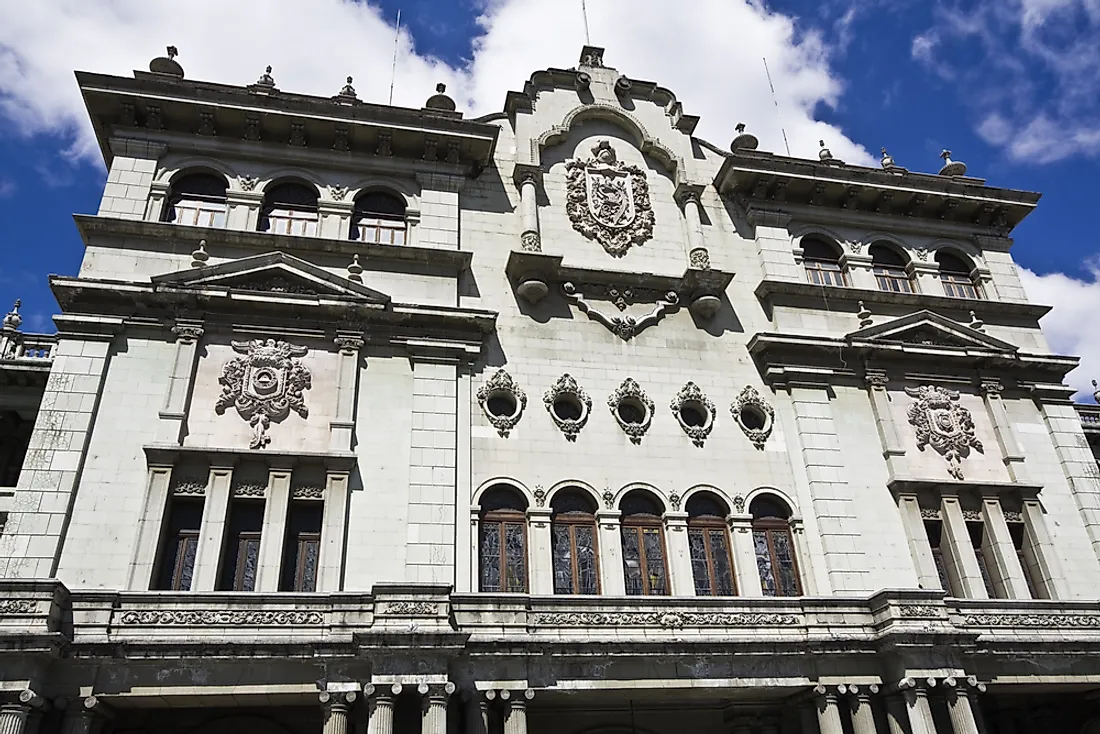The Biggest Industries in Guatemala

Guatemala is a country located in Central America, and is the largest economy of the region. The country has a gross domestic product (GDP) of $125.9 billion, based on its purchasing power. With a total population of more than 17.263 million, Guatemala is also the most populated country in the region, and has one of the largest workforces in Central America. The country's average GDP per capita is approximately $7,700 annually, although this value is not evenly distributed across the country. In fact, approximately 54% of the population lives below the poverty line, indicating a severe wealth gap. This percentage is even higher than the rest of Latin America, which stands at a 33% poverty rate. Most of the poverty in Guatemala is concentrated in rural communities and 52% of individuals living in poverty are indigenous peoples. According to the World Bank, Guatemala has a high potential for macroeconomic growth, which should translate into a continuously decreasing poverty rate in the coming years.
Guatemala experienced political instability and violence during most of the latter half of the twentieth century, which hindered the country's economic growth. However, since the late 1990s, Guatemala has focused on attracting foreign investors and even joined the Central American Free Trade Agreement (CAFTA) in 2006 in order to support its economic objectives. Its GDP has achieved an average growth rate of 3.6% since 2000, and although negatively affected by the global economic crisis in 2009 and 2010, it bounced back in 2015 with a 4.1% growth in GDP. Similarly, Guatemala's economy experienced growth of 2.9% in 2016 and approximately 3.4% in 2017. As its economy has developed over the past few decades, the country's Human Development Index (HDI) has increased slowly, and was last measured at 0.574 in 2011, which ranks Guatemala 131st of all countries in the world.
More than half of the economic activity in Guatemala occurs within four sectors: manufacturing (20%), commerce (18%), private service (14%), and agriculture (12%). Additionally, Guatemala has the 80th largest export economy in the world. The value of its exported goods is calculated at about $11.8 billion. The country also imports approximately $17.4 billion worth of goods, giving Guatemala a negative trade balance. Most of Guatemala's exports are received by the following countries: the United States ($4.28 billion), El Salvador ($1.09 billion), and Honduras ($903 million). The remainder of this article highlights some of the biggest industries in Guatemala.
The Private Sector
The private sector is the driving force of Guatemala's economy. In fact, private business is responsible for contributing approximately 85% to the national GDP. Most of the private sector is involved in the following industries: manufacturing, agriculture, and tourism. This sector is growing, however, and it has even taken over some traditionally public sector services over the last few years. This increase in the private sector has meant a decrease in the size of government, as some services like airports, banking institutions, and even public utilities are now managed by privately corporations.
Industry, Manufacturing and Agriculture Sectors
The industry, manufacturing, and agriculture sectors are primarily focused on producing the following products: textiles, furniture, petroleum, sugar, flowers, fruits and vegetables, processed foods, and chemicals. Some of the most widely grown agricultural crops in Guatemala include: coffee, bananas, nutmeg, and cane sugar. The agricultural sector employs roughly 50% of the country's labor force and produces some of Guatemala's largest export products. For example, the country exports approximately $1.02 billion worth of bananas each year, which represents approximately 8.6% of all exports. Additionally, Guatemala exports $999 million worth of raw sugar (8.5% of exports) and $753 million worth of coffee (6.4% of exports). These three goods represent the three largest exports leaving Guatemala. After fresh produce and other food items, textiles are the third largest category of exports, at a total value of $1.68 billion. Within this category, knit sweaters and t-shirts are the most widely manufactured products. Mineral products follow closely behind, with a total export value of $1.18 billion.
The manufacturing sector also has a number of maquiladoras, which are factories that typically focus on the assembly or production of goods for export. Raw materials are often imported from the same country that receive the final product. Although these types of factories are commonly associated with Mexico, they were established in Guatemala beginning in the latter half of the twentieth century, and are now primarily owned by South Korean corporations.
Services Sector
The services sector is made up of several specific industries including: tourism, healthcare, customer service, financial services, banking institutions, hospitality, communications, and retail. This sector alone is believed to make up just over 60% of Guatemala's economy. Tourism is one of the most influential industries in the services sector, generating $1.8 billion dollars in 2008. Guatemala is a popular stop for cruise ships, and the country receives an average of two million tourists annually. Visitors enjoy exploring the Guatemala's beaches and pre-Hispanic ruins.
Imported Goods
As mentioned, Guatemala imports more products than it exports at an annual value of around $17.4 billion. Although the country imports goods from a number of other nations around the world, its biggest import partners include: the United States ($6.42 billion), Mexico ($2.01 billion), China ($1.92 billion), El Salvador ($784 million), and Panama ($591 million).
The biggest category of imported products imported to Guatemala is machines, which cost the country around $3.08 billion annually. Within this category, the top imported goods are: broadcasting equipment ($422 million), computers ($212 million), and telephones ($130 million). The second largest import category is chemical products, and within this category, the top imported goods are: packaged medicines ($529 million), scented mixtures ($157 million), and pesticides ($138 million). Mineral products are the third largest import category, and include: refined petroleum ($1.89 billion), petroleum gas ($219 million), and coal briquettes ($69 million).











